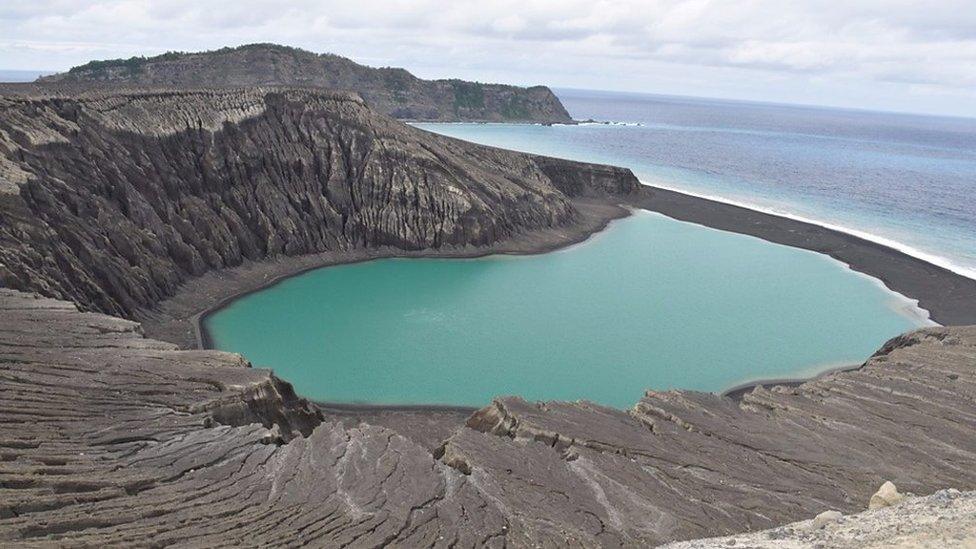New Tonga island 'now home to flowers and owls'
- Published
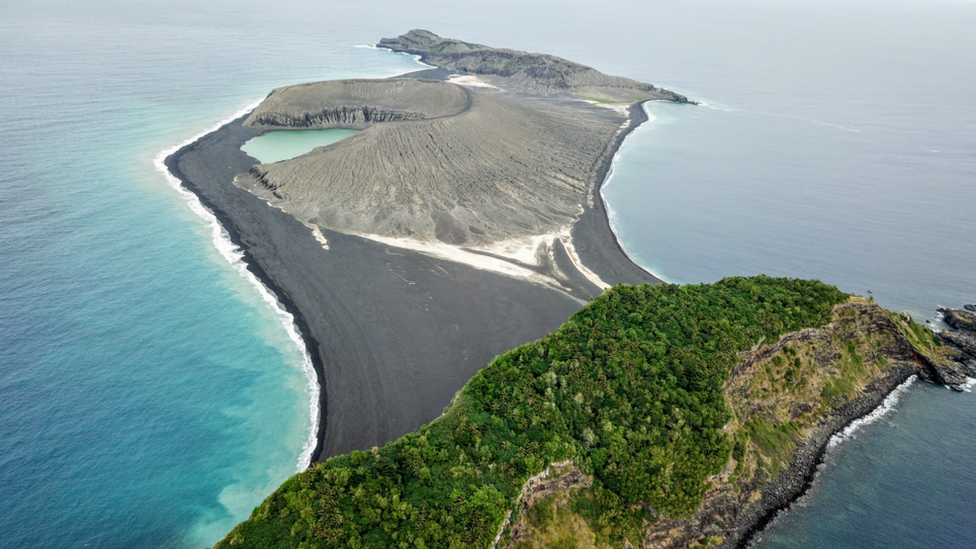
The new Tongan island formed between two existing islands
Scientists have found signs of life on one of the world's newest islands, just four years after it was spawned by a volcanic eruption.
Unofficially known as Hunga Tonga-Hunga Ha'apai, it lies in the kingdom of Tonga, and is already nurturing pink flowering plants, sooty tern birds, and even barn owls.
Tonga is made up of over 170 islands in the Pacific Ocean, east of Australia.
A team from the Sea Education Association and Nasa visited the small land mass in October, external, having previously kept watch through satellite imaging.
How exactly was the island formed?
Hunga Tonga-Hunga Ha'apai - named after the two islands it is nestled between - was born in December 2014 after a submarine volcano erupted, sending a stream of steam, ash and rock into the air.
When the ash finally settled, it interacted with the seawater and solidified. A month later, the new island was formed.
It isn't uncommon for underwater volcanic eruptions to form little islands, but they usually have shorter life-spans. Hunga Tonga-Hunga Ha'apai is one of just three to emerge in the last 150 years that have lasted more than a few months.
"In this case, the ash seemed to have a chemical reaction with the seawater that allowed it to solidify more than it usually would," volcanologist Jess Phoenix told the BBC.
Allow YouTube content?
This article contains content provided by Google YouTube. We ask for your permission before anything is loaded, as they may be using cookies and other technologies. You may want to read Google’s cookie policy, external and privacy policy, external before accepting. To view this content choose ‘accept and continue’.

She compares the island to Surtsey, an island in Iceland that was formed in a similar way in the 1960s, and is still around today.
What did scientists find when they got there?
Nasa researcher Dan Slayback was among those who visited the island in October, and said they were "all like giddy school children".
He found a light-coloured, sticky clay mud on the volcanic mass - something that left him mystified.
"We didn't really know what it was and I'm still a little baffled of where it's coming from," Mr Slayback said in a recent Nasa blog post., external
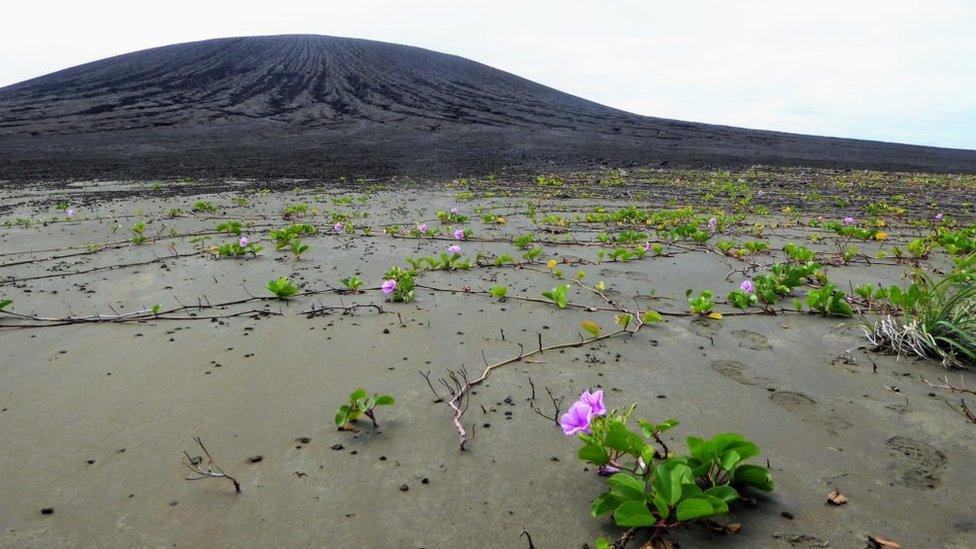
Vegetation is clearly visible on Hunga Tonga-Hunga Ha'apai
According to Ms Phoenix, the animal and plant life is easier to explain.
"It's not at all surprising that there's vegetation growing actually," she said. "It's likely that it was transported by animals - most likely through bird droppings - and volcanic land is pretty fertile".
The animals probably came from surrounding islands, she added.
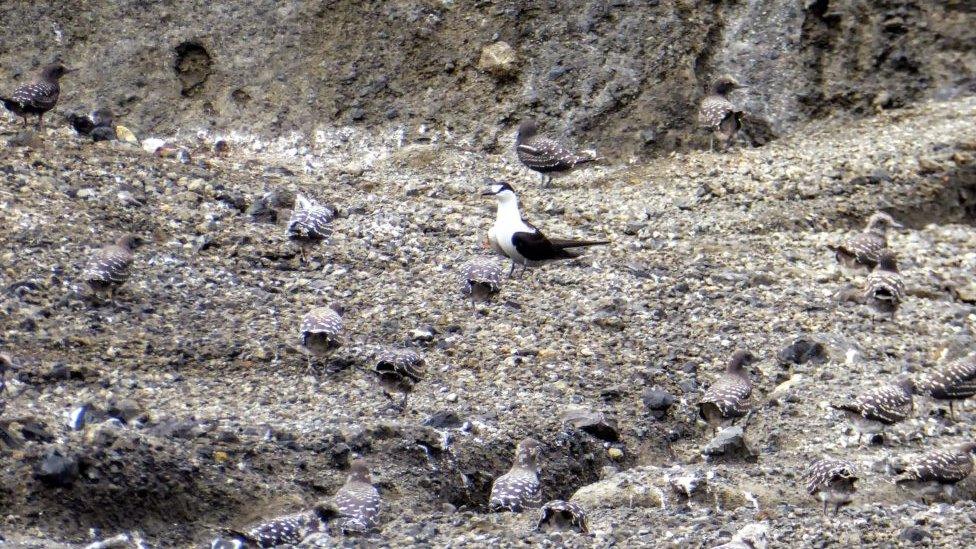
Sooty terns were seen nesting in gullies on the island
How long is the island likely to last?
Nasa had predicted in 2017 that the island could last between six and 30 years.
But Mr Slayback was not as optimistic after visiting, saying the island was eroding faster than predicted.
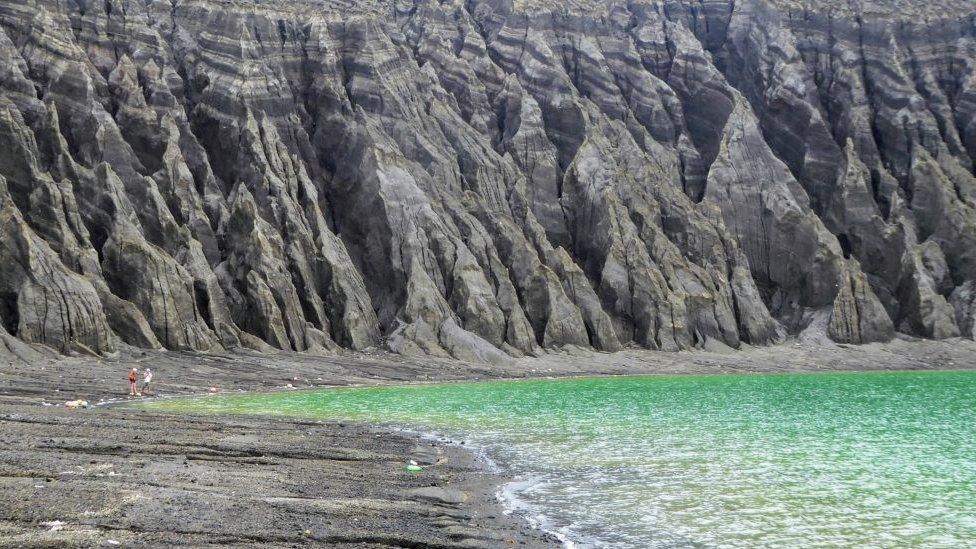
The cliffs of the crater lake are etched with erosion gullies.
"We've really got a limited time with Hunga Tonga-Hunga Ha'apai," said volcanologist Ms Phoenix.
"It seems rain is having an impact on erosion, so if there's continued heavy rain there's a real chance it might only be there for a decade or so. But it's hard to say; if we're lucky it might be there for longer."
Despite this, the fact that the island exists at all is a "big deal", she says.
"We've only had one chance to see an island like this since we had modern satellite imagery. It's a fascinating volcano."
.
- Published12 March 2015

- Published11 December 2017
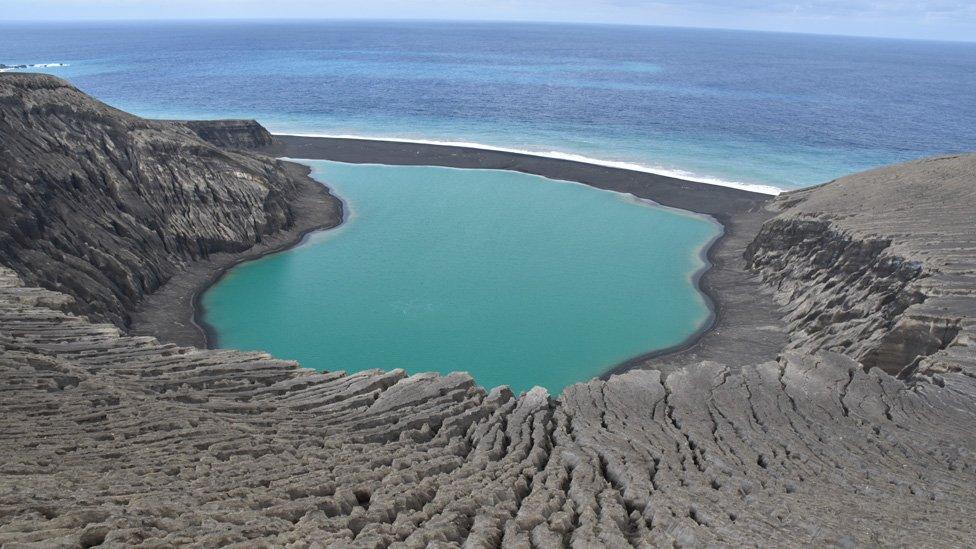
- Published11 December 2017
